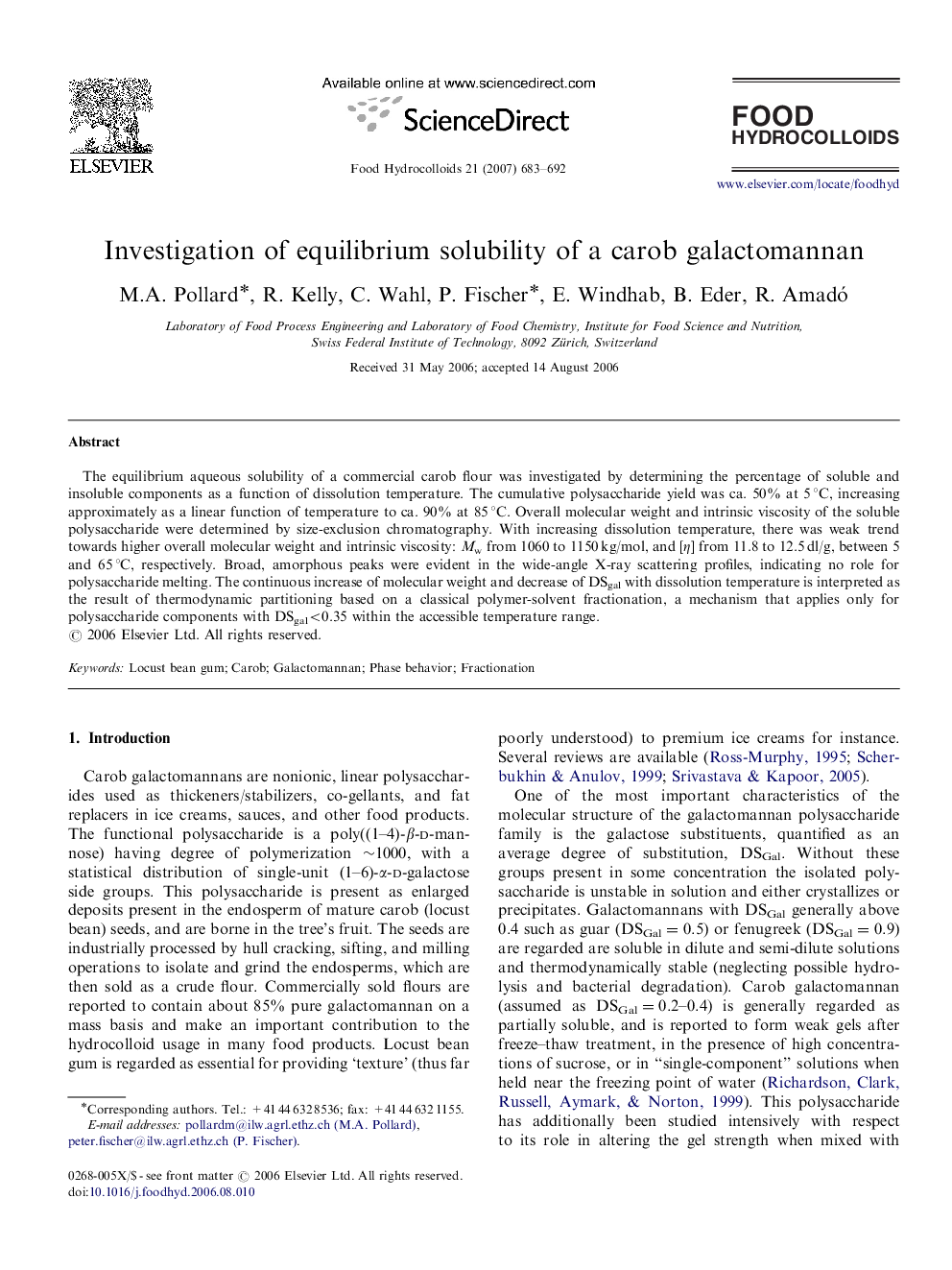| Article ID | Journal | Published Year | Pages | File Type |
|---|---|---|---|---|
| 605928 | Food Hydrocolloids | 2007 | 10 Pages |
The equilibrium aqueous solubility of a commercial carob flour was investigated by determining the percentage of soluble and insoluble components as a function of dissolution temperature. The cumulative polysaccharide yield was ca. 50% at 5 °C, increasing approximately as a linear function of temperature to ca. 90% at 85 °C. Overall molecular weight and intrinsic viscosity of the soluble polysaccharide were determined by size-exclusion chromatography. With increasing dissolution temperature, there was weak trend towards higher overall molecular weight and intrinsic viscosity: Mw from 1060 to 1150 kg/mol, and [η] from 11.8 to 12.5 dl/g, between 5 and 65 °C, respectively. Broad, amorphous peaks were evident in the wide-angle X-ray scattering profiles, indicating no role for polysaccharide melting. The continuous increase of molecular weight and decrease of DSgal with dissolution temperature is interpreted as the result of thermodynamic partitioning based on a classical polymer-solvent fractionation, a mechanism that applies only for polysaccharide components with DSgal<0.35 within the accessible temperature range.
